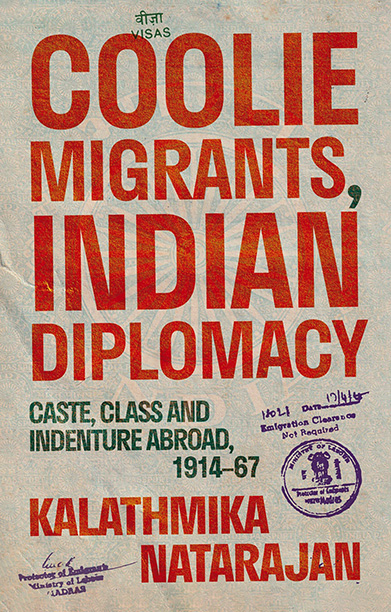India’s Near East
A New History
A revealing new history of India’s faltering attempts to exert control over its eastern hinterland and the neighbouring states of Bangladesh and Myanmar.
Description
India’s near east encompasses Bangladesh, Myanmar and the Indian states of the ‘Northeast’—Arunachal Pradesh, Sikkim, Assam, Nagaland, Manipur, Meghalaya, Tripura and Mizoram. Celebrated as a theatre of geo-economic connectivity typified by India’s ‘Act East’ policy, the region is key not only to India’s great-power rivalry with China, which first boiled over in the 1962 war, but to the idea(s) of India itself. It is also one of the most intricately partitioned lands anywhere on Earth. Rent by communal and class violence, the region has birthed extreme forms of religious and ethnic nationalisms and communist movements. The Indian state’s survival instinct and pursuit of regional hegemony have only accentuated such extremes.
This book scripts a new history of India’s eastward-looking diplomacy and statecraft. Narrated against the backdrop of separatist resistance within India’s own northeastern states, as well as rivalry with Beijing and Islamabad in Yangon and Dhaka, it offers a simple but compelling argument. The aspirations of ‘Act East’ mask an uncomfortable truth: India privileges political stability over economic opportunity in this region. In his chronicle of a state’s struggle to overcome war, displacement and interventionism, Avinash Paliwal lays bare the limits of independent India’s influence in its near east.
Reviews
‘Meticulously researched … Paliwal tells a tale of espionage worthy of Ben Macintyre.’ — The Spectator
‘Paliwal shows that despite several missteps, India has managed to establish a degree of stability in a region that could easily have slipped into greater chaos.’ — Foreign Affairs
‘A timely and valuable contribution.’ — The Indian Express
‘A must read for members of the Indian strategic community.’ — The Telegraph India
‘Paliwal dives into the myriad interconnections that shape India’s eastern periphery to decipher the tumult in Bangladesh. …The book is a product of laborious research, unflinching analysis and precise prose.’ — The Hindu
‘[This] detailed study […] is the nerd version of a thriller […] a must-read’. — Frontline
‘A … powerful argument.’ — The Print
‘Required reading for those looking to understand the complexities and competing foreign and domestic tensions that underpin India’s foreign policy.’ — Asian Review of Books
‘India’s Near East could not have arrived at a better time.’ — Himal Southasian
‘A meticulous political history.’ — India Quarterly
‘The book’s ability to offer an insight into the multiple narratives prevalent in the highly diverse ethnic landscape of India’s Near East is its single biggest contribution to existing scholarship on South Asia in general and India’s Near East in particular.’ — E-International Relations
‘Broadly conceived, deeply researched and vividly written, Avinash Paliwal’s book opens up new dimensions of India’s international history and foreign policy. Indispensable for everyone interested in the past, present and potential futures of India in Asia.’ — Srinath Raghavan, Professor of International Relations and History, Ashoka University
‘India’s Near East is a rigorous scholarly work of great contemporary relevance. For a deep and basic understanding of the geopolitical dynamics of a partitioned land that was once administratively united by colonialism, and for its twentieth-century evolution through war, conflict and social and administrative change, this will long be the book to turn to.’ — Shivshankar Menon, former Indian Foreign Secretary, Ambassador to China and National Security Adviser, and author of Indian and Asian Geopolitics: The Past, Present
‘A riveting account of the pressures of cross-border migration, identity politics, and the contradictions of official policy that have frustrated India’s ambitions to rewrite the political geography of its near eastern borderlands and counter threats from China and Pakistan. Drawing on a wealth of primary material, including hitherto untapped intelligence sources, this is an innovative interpretation of the limits of post-colonial nation-building and statecraft.’ — Farzana Shaikh, Associate Fellow, Royal Institute of International Affairs, and author of Making Sense of Pakistan
‘Paliwal unpicks the seams between South and Southeast Asia in an insightful book that fills gaps in our knowledge. India’s Near East reasseses the interconnections across lines drawn on a map and will spur debate about India’s approach to its northeast and eastern neighbours.’ — Tanvi Madan, Senior Fellow, Brookings Institution, and author of Fateful Triangle: How China Shaped US-India Relations during the Cold War
‘India’s Near East sheds new light on India’s northeastern borderlands, which for decades have been neglected by politicians in Delhi. It also offers a uniquely Indian perspective on the conflicts in Myanmar, a topic normally covered by Western scholars and analysts. Paliwal critiques India’s policies towards the northeastern states, Myanmar and Bangladesh. His well-researched book is a valuable contribution to understanding the complexities of one of Asia’s ethnically most diverse regions and its seemingly never-ending tribal uprisings and civil wars.’ — Bertil Lintner, journalist, expert on South-East Asia, and author of The Golden Land Ablaze: Coups, Insurgents and the State in Myanmar
Author(s)

Avinash Paliwal PhD is Reader in International Relations at SOAS University of London, specialising in South Asian strategic affairs. A former journalist and foreign affairs analyst, he is the author of India's Near East: A New History and My Enemy's Enemy: India in Afghanistan from the Soviet Invasion to the US Withdrawal, both published by Hurst.






